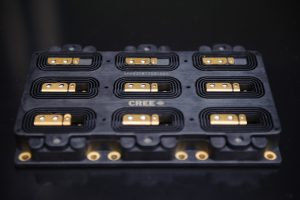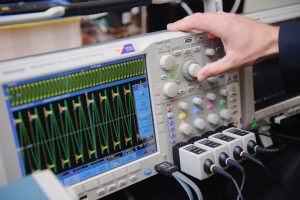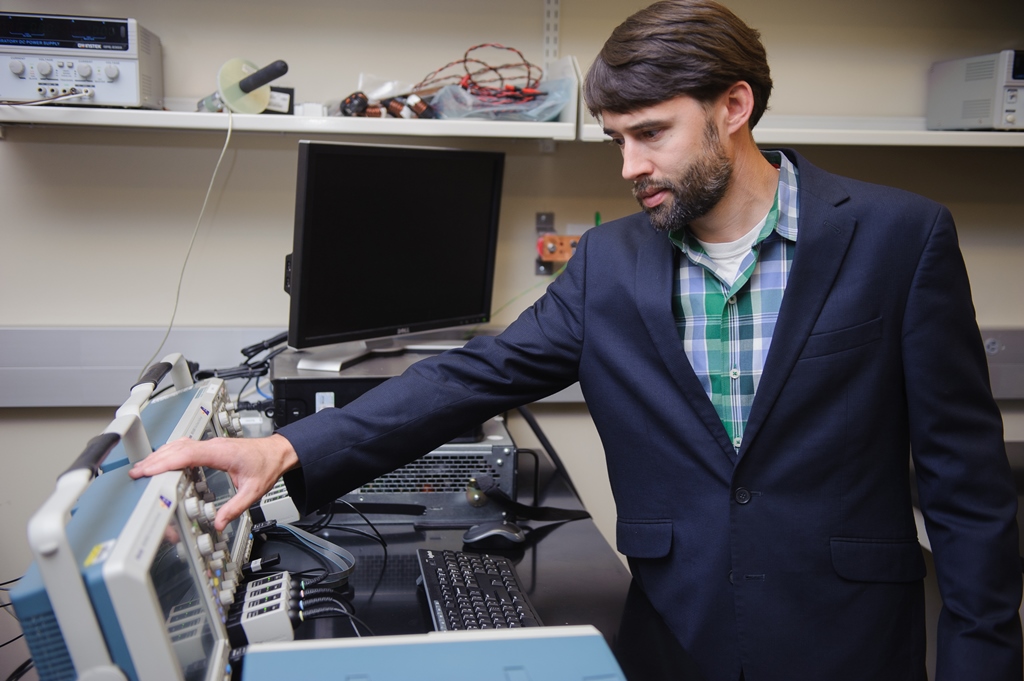
TUSCALOOSA, Ala. — A University of Alabama professor has recently received a prestigious award from the U.S. Navy in hopes of advancing the future of Naval ships.
Dr. Andrew Lemmon, UA assistant professor of electrical and computer engineering, is one of 31 recipients of the 2018 Young Investigator Award. He was selected to the annual program from more than 340 applicants. Lemmon will receive $500,000 over three years for his work with the Office of Naval Research, an organization within the United States Department of the Navy.
“It’s obviously a huge honor, and I feel very fortunate to have received this award,” Lemmon said.
The purpose of the Young Investigator Program is to support early-career academic researchers whose work demonstrates significant future promise that aligns with the Navy’s needs. Lemmon is believed to be the first faculty member at UA to receive the YIP award since its inception in 1985.
“We are very proud of Dr. Lemmon for receiving an ONR Young Investigator Award,” said Dr. Charles Karr, dean of UA’s College of Engineering. “This is a very prestigious award, but one that is well deserved. We are excited about the work Andy does for the Navy.”
Lemmon’s research in power electronics is expected to contribute to closing known technology gaps in the Navy’s current 30-year ship building plan. This long-term plan includes a shift toward electric propulsion for some types of U.S. Navy ships, which requires moving to a new power architecture called the Integrated Power System. IPS will enable ship propulsion and other loads to be powered from a common system in order to reduce the total amount of power required.
This system has been in development for several years, and it is where Lemmon’s research ties in. His research team is working with a new generation of high voltage semiconductors made from silicon carbide, or SiC, which is a key enabling technology for future large-scale IPS implementations. The goal of Lemmon’s YIP program is to help the Navy understand and resolve the challenge of electromagnetic interference, or EMI, in systems designed with SiC.
“This is a major challenge, and we can’t yet solve it completely, but we are discovering methods to drastically reduce the amount of electromagnetic interference that is emitted by these devices,” Lemmon said.
His team is exploring design options for the mechanical packaging of SiC semiconductors, which usually takes the form of a multi-chip power module. Lemmon has a long-term working relationship with the power module team of Wolfspeed, a Cree Company, located in Fayetteville, Arkansas, to explore the connection between module design and EMI. Cree is considered a world leader in high-voltage SiC semiconductor packaging and will collaborate on Lemmon’s program.
“Wolfspeed has partnered with the Navy to optimize 10,000-volt SiC devices and modules for over a decade,” said John Palmour, Wolfspeed chief technology officer. “We look forward to continuing this work with the UA team to tackle the challenges of deploying this new technology.”

Lemmon started assisting with ONR sponsored research while he was in the doctoral program at Mississippi State University. He began investigating the higher order effects of using SiC semiconductors with his former adviser, Dr. Michael Mazzola, who, in 1995, became the first MSU faculty member to receive the Office of Naval Research Young Investigator Program award.
While at Mississippi State, Lemmon developed techniques to manage the higher order effects of SiC semiconductors, but he had not yet made the connection to the Navy’s concern regarding EMI in future ships.
That changed in 2015 when Lemmon met with Capt. Lynn Petersen, a program officer in ONR’s Ship Systems and Engineering Research division. Petersen recognized how the work being done by Lemmon could benefit the Navy. Now, he is Lemmon’s program officer on this award.
“He immediately saw the potential impact of my work and how it could help the Navy get to the point of deploying silicon carbide,” Lemmon said. “This grant allows us to take that next step to make sure that what we’re discovering in the lab can be ultimately transitioned to Navy ships.”
The grant will be used to move the program in a more application-focused direction and will allow Lemmon and his three graduate assistants to broaden the impact of this research for the Navy’s benefit.
“This opportunity is largely due to Captain Petersen’s leadership and his ability to see the connections between what my research was offering and the Navy’s future technology needs,” Lemmon said.
Contact
Alana Norris and Gillian Castro, engineering communications, 205-348-6444, anorris@eng.ua.edu
Source
Dr. Andrew Lemmon, lemmon@eng.ua.edu
